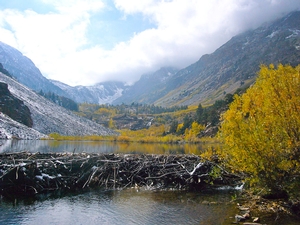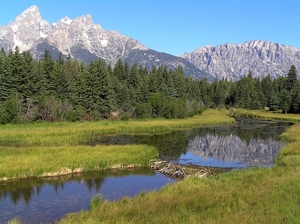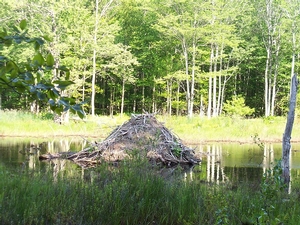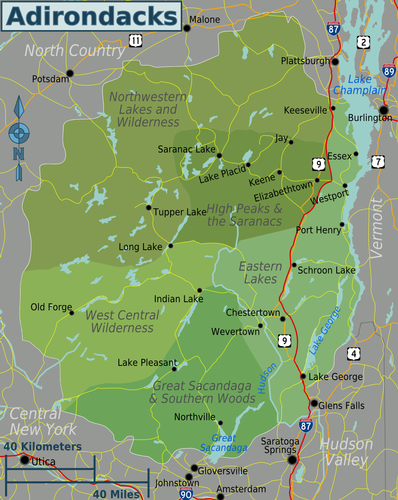At present, the Department of Environmental Conservation (DEC) estimates that 50,000-70,000 beavers live in the Adirondacks (Saunders). This number shows that the beaver population has been steadily increasing since its reintroduction in the early 20th century. This can be attributed to the fact the price of beaver pelts decreased significantly in the 20th century and also to the fact that there are legalized trapping seasons in the park. Since fur prices are so low, trappers can no longer make a living off of beaver trapping and sales. The main motivations for beaver trapping today are recreation, population control, and for the removal of beavers that are considered to be nuisances. Today in the Adirondack Park, the DEC has made beaver trapping legal during special beaver trapping seasons in certain zones. "The state policy is to keep the beaver population at a level that maximizes the good it does for wetlands and minimizes complaints by landowners. 'We control the population by regulating the trapping season,' said Gary Parsons, chief of the State Bureau of Wildlife. His agency has divided the state into 19 wildlife management units and has set a season for trapping in each, based on beaver population and impact on human habitation. " (Faber).
Please click HERE to visit the Department of Environmental Conservation's current website that contains the New York State map showing beaver trapping seasons in different areas.
Most trapping seasons are based on geographical units referred to as Wildlife Management Units. Wildlife Management Units (WMUs) usually set between boundaries such as highways or large streams, making them clearly identifiable on the ground. To learn more about Wildlife Management Units on the DEC's website click HERE
Our Opinion on trapping:
Sara and Cori believe that the DEC's decision to permit seasonal beaver trapping in the Adirondack Park is acceptable and should be continued. Even though we believe that the beaver is a crucial animal in the park that significantly impacts wetlands, habitats, and biodiversity, we acknowledge that the overpopulation of the beaver is a bad thing and therefore, the population should be regulated. Regulation balances the costs and benefits of the beaver. Having annual beaver harvests controls the population, limits the damage that results from dam creation and flooding, and makes up for the fact that the beaver's main predator, the wolf, is absent from the park. Unlike the beaver, wolves have not yet been reintroduced into the Adirondacks, although, there are many people in the Park today that support the reintroduction of these large animals.
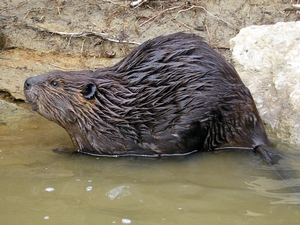 Thank you for taking the time to view our website about the often misunderstood beaver. We hope that you have learned about the beaver's paradoxical nature as well as the animal's important history and current role in the Adirondack Park. The beaver is so much more than a nuisance that chews through cables and floods summer cottages. The Adirondacks would look very different and would have a lot less activity and life without this very important animal.
Thank you for taking the time to view our website about the often misunderstood beaver. We hope that you have learned about the beaver's paradoxical nature as well as the animal's important history and current role in the Adirondack Park. The beaver is so much more than a nuisance that chews through cables and floods summer cottages. The Adirondacks would look very different and would have a lot less activity and life without this very important animal.
Sara Kleinman and Cori Smith
Sources:
1. Saunders, "Beaver."
2. Faber, "New York Renews Trapping to Thin Beaver Population."
Images: Creative Commons
